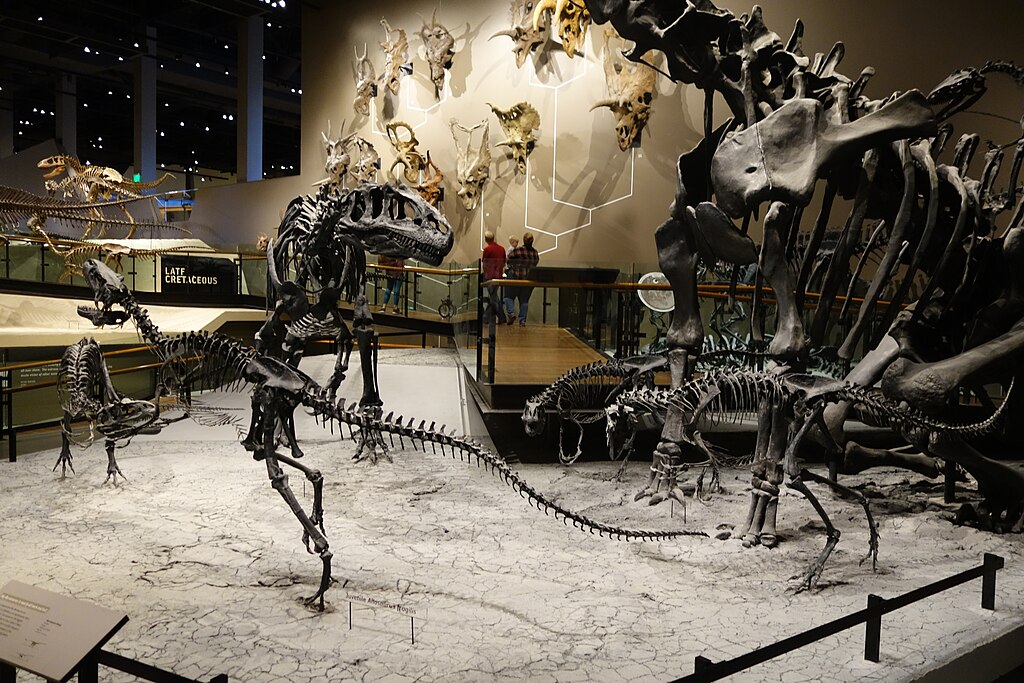Dinosaurs dominated Earth for over 165 million years, an astounding reign that speaks to their remarkable adaptability and evolutionary success. While their eventual extinction came from an asteroid impact too catastrophic to overcome, these magnificent creatures developed an array of surprising and sometimes bizarre adaptations that allowed them to thrive across every continent. From specialized feeding mechanisms to unusual defensive features, dinosaurs evolved remarkable traits that helped them survive in diverse ecosystems. These evolutionary innovations not only ensured their long-term success but continue to fascinate paleontologists who uncover new evidence about these strange adaptations. Let’s explore ten of the most unusual traits that gave dinosaurs their evolutionary edge in a primeval world.
Hollow Bones That Balanced Weight and Strength
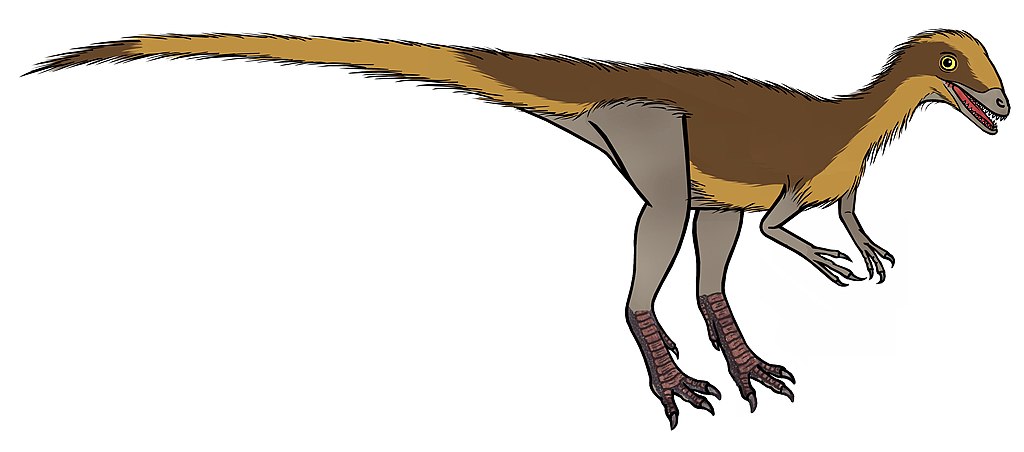
Many dinosaurs, particularly theropods (the group that includes Tyrannosaurus rex and modern birds), evolved hollow bones that revolutionized their mobility while maintaining structural integrity. This pneumatic bone structure, filled with air sacs connected to their respiratory system, significantly reduced body weight without compromising strength. For large predators like Allosaurus, this adaptation allowed for faster movement despite their imposing size, providing a crucial advantage when pursuing prey. In flying dinosaurs and their descendants, these lightweight bones were essential for taking to the skies. Paleontologists studying these structures have found evidence of complex internal chambers and connecting passages that suggest the dinosaurian respiratory system was far more efficient than previously thought, potentially allowing for higher metabolic rates than their reptilian contemporaries.
Feathers for Insulation Long Before Flight

While we commonly associate feathers with flight, dinosaurs developed these structures primarily for temperature regulation millions of years before any creature took to the air. Early feathered dinosaurs like Sinosauropteryx sported simple, hair-like proto-feathers that functioned as insulation, helping these warm-blooded animals maintain their body temperature in varying climates. The discovery of feathered dinosaur fossils in China revolutionized our understanding of dinosaur physiology and appearance, revealing that many species we once imagined as scaly were actually covered in colorful plumage. These insulating feathers likely played a crucial role in allowing dinosaurs to remain active in cooler temperatures and during nighttime, expanding their ecological niches. Over time, these simple thermal regulators evolved into more complex structures that eventually enabled flight in some lineages, demonstrating how adaptations can serve entirely different purposes over evolutionary time.
Bizarre Head Crests for Communication
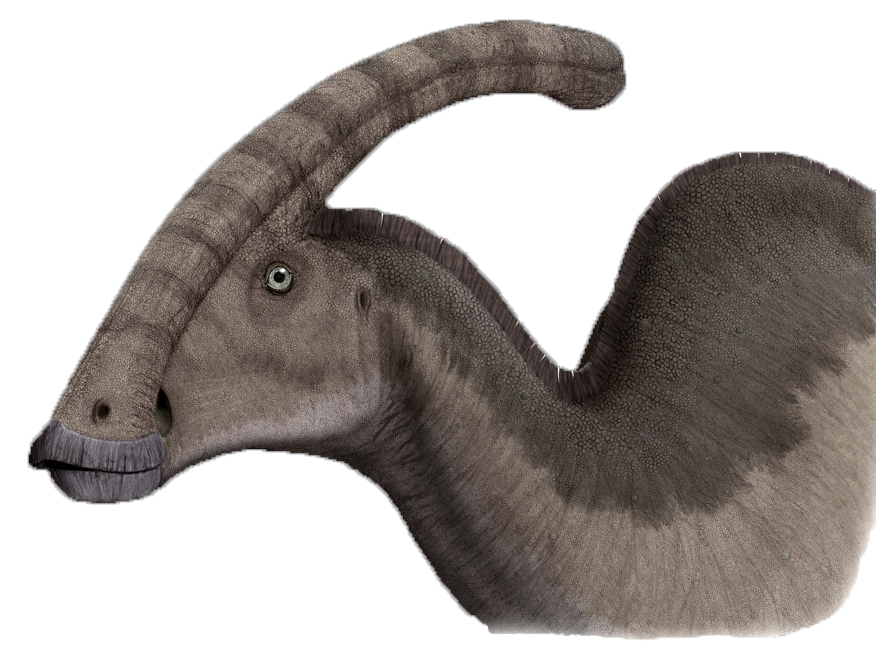
Some of the most visually striking dinosaur features were the elaborate crests that adorned the heads of species like Parasaurolophus and Dilophosaurus. These bony structures, sometimes extending several feet from the skull, served as visual signals rather than weapons. In Parasaurolophus, the hollow, tube-like crest connected to the nasal passages, functioning as a resonating chamber that produced distinctive low-frequency sounds for long-distance communication across herds. Paleontologists studying these crests have identified growth patterns suggesting they developed fully only in mature individuals, indicating they likely played important roles in mate attraction and social hierarchy establishment. The incredible diversity of crest shapes across different species suggests they served as visual identifiers that allowed dinosaurs to recognize members of their own species from a distance. These elaborate structures represent significant energy investments, underscoring their critical importance to dinosaur social systems despite seeming impractical for everyday survival.
Extraordinarily Efficient Digestion Systems
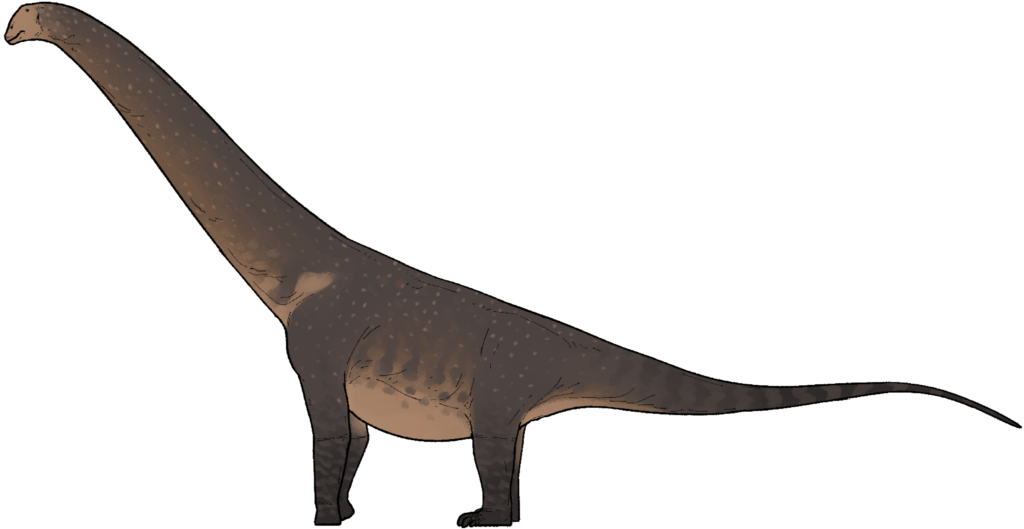
Sauropod dinosaurs like Diplodocus and Brachiosaurus reached their colossal sizes partly due to remarkably efficient digestive systems that maximized nutrient extraction from tough plant material. Unlike modern herbivores that thoroughly chew their food, many plant-eating dinosaurs swallowed vegetation whole and relied on gastroliths—polished stones in their gizzards—to mechanically break down plant matter. Evidence from fossilized stomach contents reveals these dinosaurs possessed specialized gut bacteria capable of fermenting fibrous plants for extended periods, extracting previously inaccessible nutrients. Some sauropods may have had digestive tracts exceeding 100 feet in length, allowing food to be processed for weeks rather than days. This digestive efficiency meant they could survive on lower-quality vegetation than other herbivores, expanding their potential feeding ranges and helping them thrive even when food resources became limited during seasonal changes.
Teeth That Continuously Regrew Throughout Life

Unlike mammals with their permanent adult dentition, most dinosaurs possessed the remarkable ability to continuously replace their teeth throughout their lives, providing a significant survival advantage. Tyrannosaurus rex, with its bone-crushing bite force, regularly broke teeth during feeding but could replace each lost tooth within months, ensuring its predatory capabilities remained intact. Herbivorous dinosaurs like Triceratops experienced even more rapid tooth replacement, with new teeth emerging approximately every 35-45 days to counter the extreme wear from grinding tough plant materials. Hadrosaurs (duck-billed dinosaurs) took this adaptation to extraordinary levels with dental batteries containing hundreds of teeth stacked in columns that pushed upward as surface teeth wore down, essentially creating self-sharpening grinding surfaces. This continuous dental replacement allowed dinosaurs to maintain efficient feeding capabilities regardless of age, significantly extending their potential lifespans compared to mammals that might eventually starve once their teeth were worn beyond functionality.
Air Sac Breathing System Beyond Lungs

Dinosaurs possessed a revolutionary respiratory system that surpassed the efficiency of the simple lungs found in their reptilian ancestors and most modern mammals. This system featured interconnected air sacs that extended throughout their bodies, even into their bones, creating a unidirectional airflow that allowed for complete gas exchange with each breath. Unlike the bidirectional breathing of mammals, where exhaled air mixes with fresh air, dinosaurs’ respiratory systems ensured a constant supply of oxygen-rich air contacted their blood vessels. This highly efficient breathing mechanism likely supported higher metabolic rates and activity levels than would otherwise be possible for animals of their size. In larger dinosaurs like Apatosaurus, this adaptation proved essential for oxygenating their massive bodies, while in smaller, more active predators, it provided the stamina needed for sustained pursuit of prey. Modern birds inherited this unusual respiratory system, which helps explain how they can perform physically demanding activities like flying at high altitudes where oxygen levels are significantly reduced.
Armored Plates That Doubled as Temperature Regulators
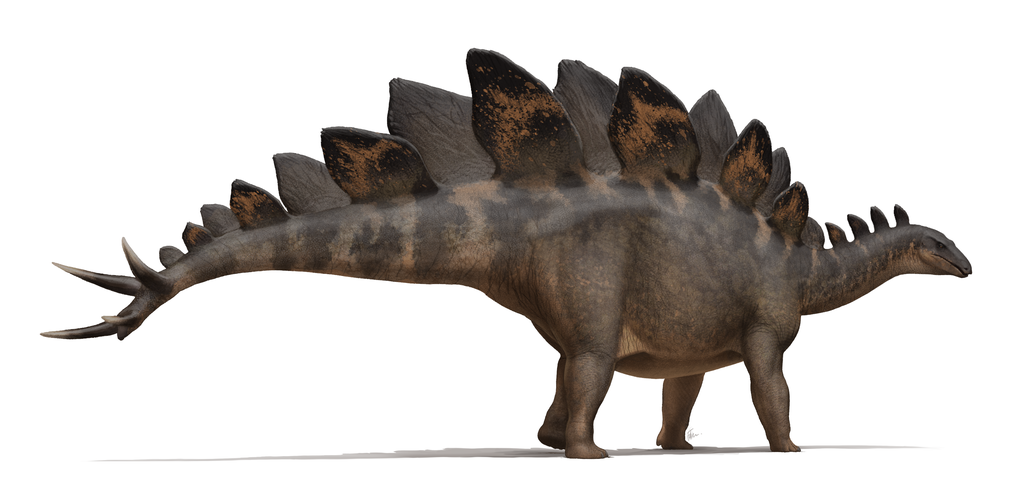
The distinctive plates along Stegosaurus’s back have long been recognized as defensive structures, but research has revealed they served a dual purpose as sophisticated temperature regulation devices. These thin, broad plates contained extensive networks of blood vessels that could either absorb or dissipate heat depending on the animal’s needs. When positioned to catch morning sunlight, the plates warmed blood circulating through them, helping raise the dinosaur’s body temperature efficiently after cool nights. During intense midday heat, the same plates could be used to shed excess thermal energy, preventing overheating. CT scans of well-preserved plates have revealed that the blood vessel networks were more complex than previously understood, suggesting precise control over blood flow to these structures. This adaptation gave Stegosaurus remarkable thermoregulatory control despite its relatively small brain, allowing it to remain active through varying environmental conditions while conserving energy that would otherwise be spent on internal temperature maintenance.
Extraordinarily Long Necks Beyond Conventional Limits
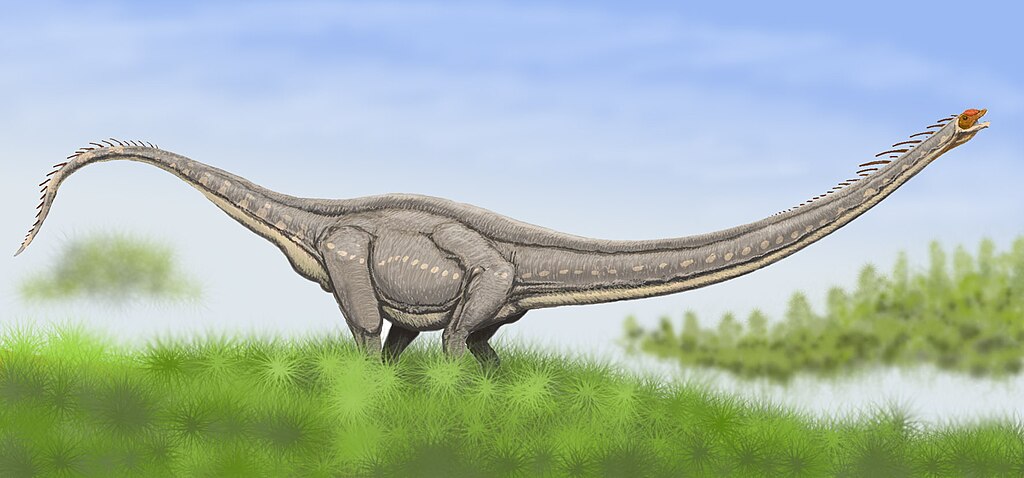
Sauropod dinosaurs evolved necks of astonishing length, with some species like Mamenchisaurus sporting necks exceeding 35 feet—longer than a school bus and pushing the boundaries of what seems physically possible. These extraordinary appendages were made feasible through a unique vertebral structure featuring air-filled cavities that drastically reduced weight while maintaining strength. Each vertebra connected to the next with ball-and-socket joints that provided remarkable flexibility while specialized muscles and ligaments prevented the neck from collapsing under its own weight. Rather than carrying the neck horizontally as traditionally depicted in older illustrations, research suggests many sauropods held their necks in more upright positions, allowing them to reach vegetation unavailable to other herbivores. This adaptation effectively eliminated competition for food resources in certain height zones, creating exclusive feeding opportunities that supported their massive caloric requirements while minimizing energy expenditure for movement between feeding sites.
Super-Sensitive Sensory Organs in Skulls

Many dinosaurs possessed highly specialized sensory adaptations housed within elaborate skull structures that enhanced their perception of their environment. Tyrannosaurus rex featured pressure-sensitive organs in its snout similar to those found in crocodiles, potentially allowing it to detect minute water movements or pressure changes when prey attempted to hide. Parasaurolophus and other crested hadrosaurs had unusually large olfactory regions in their brains and complex nasal passages that likely provided exceptional senses of smell for detecting predators or locating specific food sources. Some dinosaurs, particularly small predatory species, possessed disproportionately large optic lobes, suggesting vision played a critical role in their hunting strategies. Duck-billed dinosaurs had thousands of tiny neurovascular canals running through their broad bills, indicating these structures contained sensitive touch receptors similar to those in modern duck bills, perfectly adapted for selective feeding among aquatic vegetation. These enhanced sensory capabilities gave dinosaurs significant advantages in finding food, avoiding danger, and navigating their environments across various lighting conditions.
Unique Social Behaviors Revealed in Fossil Records
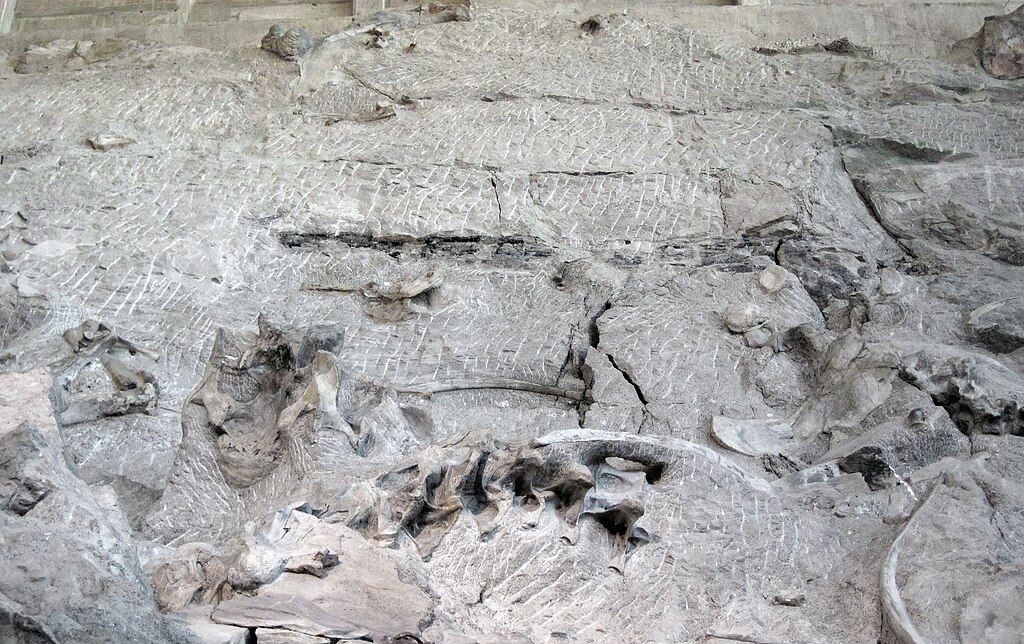
Fossil evidence has revealed that many dinosaur species exhibited complex social behaviors that significantly enhanced their survival prospects. Trackway sites preserving multiple sets of footprints moving in coordination demonstrate that hadrosaurs and sauropods traveled in organized herds with adults protecting juveniles in central positions. Mass bone beds of Maiasaura (“good mother lizard”) contain fossils of adults alongside nests with hatchlings at different growth stages, strongly suggesting extended parental care similar to modern birds rather than the abandonment strategy typical of reptiles. Microraptor fossils discovered in close proximity with consistent positioning indicate these small predators likely hunted cooperatively in packs, similar to modern wolves, allowing them to take down prey much larger than individuals could manage alone. Evidence of healing in severely injured specimens suggests some dinosaur species provided support to injured members rather than abandoning them, increasing individual survival chances through group protection. These social adaptations created multiple survival advantages through predator deterrence, knowledge sharing between generations, and more efficient resource utilization across varying environmental conditions.
Bizarre Defensive Adaptations Beyond Spikes and Armor

While many dinosaurs relied on obvious defensive features like armor plates and spikes, others evolved strange and unexpected protection mechanisms. Ankylosaurus famously possessed a massive tail club capable of shattering predator bones on impact, but CT scans have revealed sophisticated sensor networks that helped coordinate precise strikes rather than random swings. The peculiar “shoulder spikes” of Kentrosaurus and some other stegosaurs were arranged to create mechanical barriers that physically prevented predator jaws from achieving proper grip on vital areas. Protoceratops and its relatives developed elaborate neck frills that appeared menacing but were primarily thin bone sheets covered with blood vessels that could flush with blood to suddenly increase apparent size during threat displays. The unusual Spinosaurus featured a massive sail-like structure that, beyond its temperature regulation function, created a dramatic silhouette that may have deterred potential predators through intimidation. These diverse defense mechanisms demonstrate the incredible evolutionary creativity that emerged as dinosaurs engaged in predator-prey arms races spanning millions of years.
Evolutionary Legacy: How Dinosaur Traits Live On Today
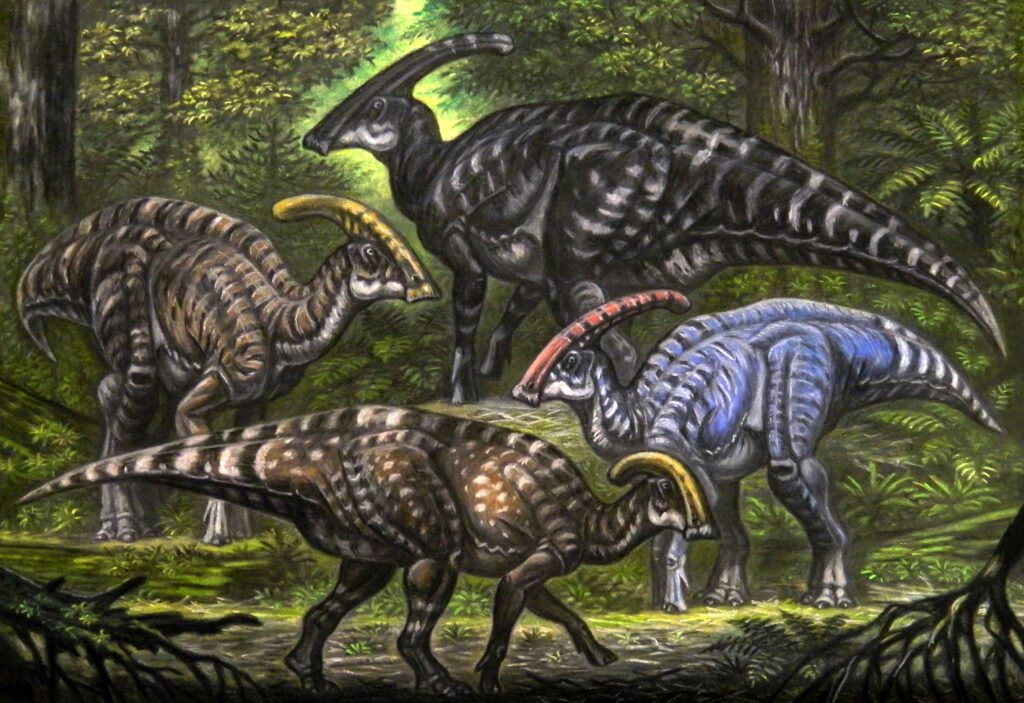
Though non-avian dinosaurs vanished 66 million years ago, many of their most successful adaptations persist in their living descendants: modern birds. The lightweight pneumatic bones that helped dinosaurs achieve massive sizes now enable birds to achieve flight, retaining nearly identical microscopic structures. The continuous tooth replacement system evolved into specialized beaks with similar mechanical advantages but without requiring constant regeneration. The complex unidirectional air sac breathing system remains virtually unchanged in modern birds, allowing species like bar-headed geese to fly over Mount Everest where mammals would quickly lose consciousness. Even behavioral traits like nest building, complex social interactions, and parental care of offspring represent direct continuations of patterns established in dinosaur lineages over 100 million years ago. By studying these living dinosaur descendants, paleontologists continue gaining insights into the biological systems that made dinosaurs so remarkably successful for so long, understanding the evolutionary processes that transformed ground-dwelling theropods into the approximately 10,000 bird species worldwide today.
The remarkable 165-million-year reign of dinosaurs stands as testament to their evolutionary ingenuity. Their strange yet effective adaptations—from hollow bones and specialized respiratory systems to continuous tooth replacement and sophisticated sensory organs—enabled them to dominate Earth’s ecosystems across changing climates and continental shifts. While an astronomical catastrophe eventually ended their era, these incredible creatures left an indelible mark on our planet’s history and evolutionary trajectory. Their legacy lives on not only in fossil records but in the birds that share our modern world, carrying forward the most successful adaptations that allowed their ancestors to thrive for so long. By understanding these strange traits that helped dinosaurs survive, we gain deeper appreciation for nature’s boundless creativity in solving the challenges of existence.


